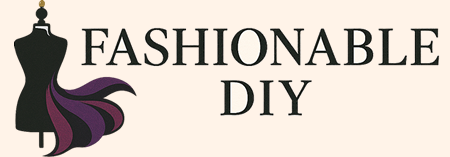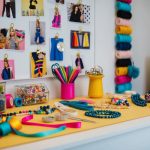From Runway to Home: DIY Trend Transformations for 2024
Defining Your Style Goals
Once their existing wardrobe is analyzed, individuals can set style goals. These goals might focus on adopting a new trend, refining a particular aesthetic, or filling in gaps found during the wardrobe analysis. Considerations around lifestyle and personal values can guide these choices.
Visual inspirations, such as fashion magazines, social media, and style blogs, help refine these goals. Keeping note of admired looks and outfits can spark ideas and clarify desired changes.
Clearly defined goals serve as a navigation tool, helping focus clothing additions and adjustments. With a cohesive style direction, individuals enhance their confidence and self-expression while updating their wardrobe.
Seeking Inspiration
Transforming runway styles into DIY projects requires a keen eye for fresh ideas. Designers and fashion shows offer a wealth of inspiration, pushing creative boundaries and showcasing diverse perspectives, encouraging enthusiasts to bring these innovative styles into their own homes.
Innovative Designers to Watch
Emerging designers play a crucial role in setting new trends. Their unique approaches and fresh perspectives are often characterized by innovative use of materials and unexpected silhouettes. These creatives often collaborate across various disciplines, incorporating elements of technology and sustainability into their designs. Such innovation not only drives fashion forward but also serves as a significant source of inspiration for do-it-yourself enthusiasts looking to replicate high-fashion trends at home. By studying these designers, DIYers can gain insights into the latest materials and techniques, fostering creativity and experimentation.
Inspiration from Fashion Shows
Fashion shows offer a dynamic platform for showcasing upcoming trends. They provide a comprehensive view of seasonal collections, allowing for a better grasp of how colors, fabrics, and styles converge to create cohesive looks. These events emphasize diversity and inclusivity, highlighting a wide range of cultural influences and perspectives. Enthusiasts can extract key visual elements and styling techniques to apply in their personal projects. With the constant evolution seen on these runways, fashion shows remain a vital resource for anyone seeking to translate professional styles into their own DIY creations. The vibrant energy and innovative designs presented can spark countless ideas for creative transformation.
Sustainable Fashion Choices

In recent years, sustainable fashion has prioritized eco-friendly materials and ethical brand collaborations. These choices are crucial for reducing environmental impact and improving traceability in fashion.
Eco-Friendly Materials
Sustainability in fashion often begins with the materials utilized. Organic cotton, hemp, and bamboo are increasingly popular due to their minimal environmental impact. Organic cotton requires less water and avoids harmful pesticides, while hemp consumes less water and replenishes soil health.
Recycled materials are also gaining traction. Polyesters and nylons made from post-consumer waste are being adopted widely. These materials reduce reliance on raw resources and cut down on pollution generated during production processes. For greater stability, fabrics developed from these sustainable sources do not sacrifice durability or comfort.
Natural dyes have resurfaced as a viable alternative to chemical dyes. They result in less water pollution and maintain the integrity of recycled textiles. When fashion brands invest in eco-friendly materials, they contribute to a more sustainable future, supporting stability within the ecosystem.



